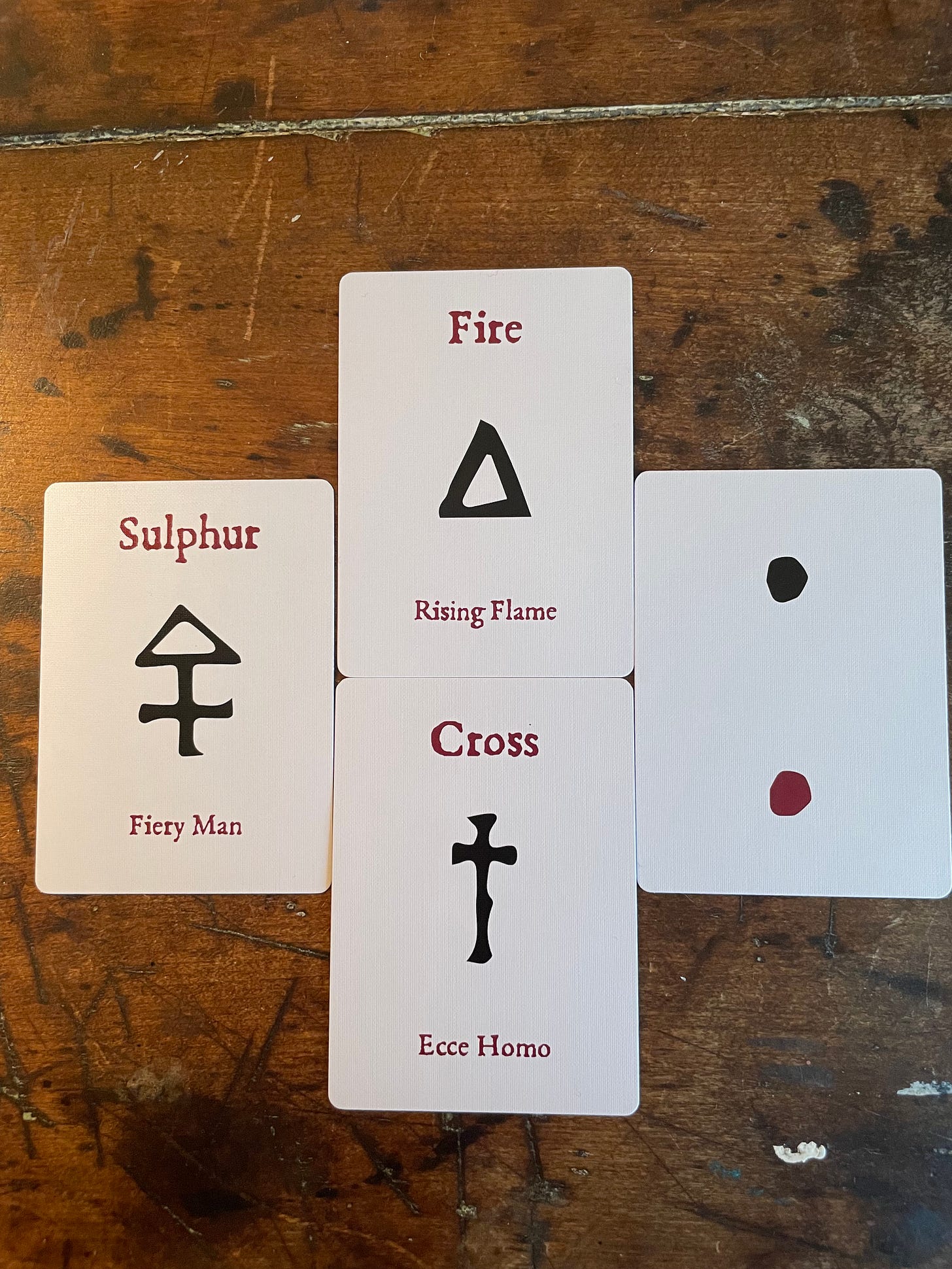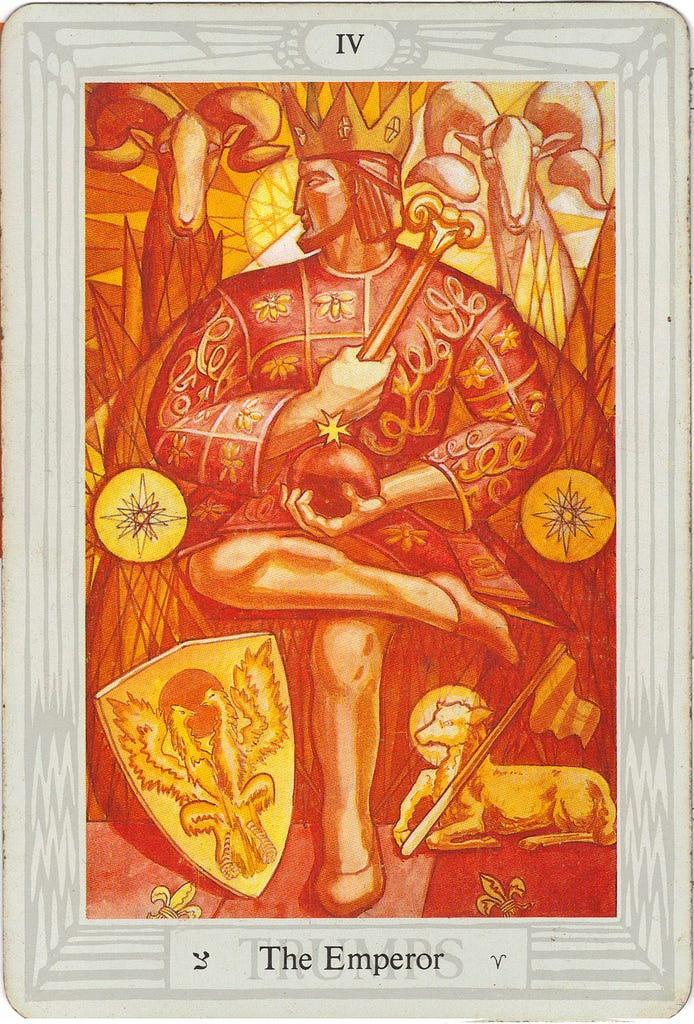Yesterday I released my first deck of cards.
L’Histoire
I have been reading cards for 10 years now. Early in high school, an older friend, and fellow Sagittarius, and the coolest guy in school, suggested I start reading Tarot, we had been walking by the beach, I remember it vividly.
From my earliest interactions with the Tarot, I was fascinated by the symbolism, as symbolism was already a huge interest in my filmmaking and writing, but it wasn’t until I was gifted Aleister Crowley’s Book of Thoth and Thoth tarot deck that I began to really develop as a reader, and gain insight into the symbolism therein.
Magical Symbols become the center of an ongoing obsessional, self renewing fascination. But again, my understanding was limited as to the why of symbolism.
Two days before I graduated high school, I picked up the Selected Writings of Ezra Pound at a thrift shop, I’d read Eliot, and enough commentary that I was aware of il miglior fabbro, and wanted to understand him.
I read it, and loved it. But I didn’t get it. Especially not his use of Ideograms in the Cantos. Years later, I would read a book of commentary on Pound at a library, and the chapter on Ideograms, then I became fixed upon the concept.
Ideograms
First, what is an Ideogram? An ideogram is a symbol that represents an idea, often through the use of several pictures to form a poetic vision.
A good example is John Dee’s Monas Hieroglyphica:
A symbol which he developed as a sort of set of “radicals” for all Western occult symbols. Chinese contains 218 Radicals, which form all characters, we got 4.
It connected itself to reading I’d done previously in high school, of Julius Evola’s Hermetic Tradition.
(Two edgy authors, I know, but the ideogrammic work itself is objective and not tinged with politick, just magick)
In this book, Evola renders ideogrammic analyses of Alchemical symbols, which I found astounding and profound.
It was through this path that I set about doing my own ideogrammic analyses.
Analyses
In 2021, my ex and I went to a venue for a concert, and soon realized we had the wrong date. She had a drink, but I was restless and annoyed, so I went to the nearby occult shop, and decided to get some Runes.
They fascinated me, and I soon realized they were an ideogrammic language, an element sorely underutilized in nearly every magical tradition, the breaking down of the base symbols to their poetic imagery. I drew out the ideograms that I saw in them, and had it confirmed later by the few resources on runes that are around.
This train of thought stayed on the back burner for a year.
In Los Angeles, while ill, inspiration struck and I began my ideogrammic analyses of the Western symbols. The majority was completed in a day, and over the next few months I’d flesh it out to 52 cards.
A playing deck, not a tarot deck.
Blair and I then designed them. A magical process in itself, we lifted each symbol from ancient and effective texts. Ensuring the depictions are embued with their fitting vibe. Some are from Crowley, some from Mylius, some from Boehme, etc.
We had a prototype run printed and we’d read our friends, and play with them, but it wasn’t until printing the full 52 card deck, that we found they functioned really well.
I am proud to say that this thread of ideogrammic symbolic analysis in my work at last found a full expression in this deck.
The Deck
This spread of cards offers a good illustration of the functionality.
The Colon “ : ” that occupies the back of the cards is the palette of Thoth, featured on the cover. The Ancient Egyptians and Chinese generally wrote solely in red and black ink (which tends to remain true, blue is a radical shift!).
The Fire card shows that the upright triangle is depicting flame itself, light and candle, match, or lighter, and you’ll see the pointed flame.
The Cross, while an infinitely renewable symbol in itself, I think, at root, is a very simple stick figure. (Ecce Homo means behold man)
Together they form Sulphur, a Man ruled by Fire.
The Emperor in the Thoth deck is in the pose of Sulphur.
Works
This deck is very simple, but it is not lacking in depth. It operates as a sort of guide to the symbolic framework that forms the esoteric tradition, and tarot in particular.
As I continue to release tarot and oracle decks, I will be utilizing this framework.
I also intend on writing a more in depth book on the symbols within the deck, but the booklet is sufficient for now.









